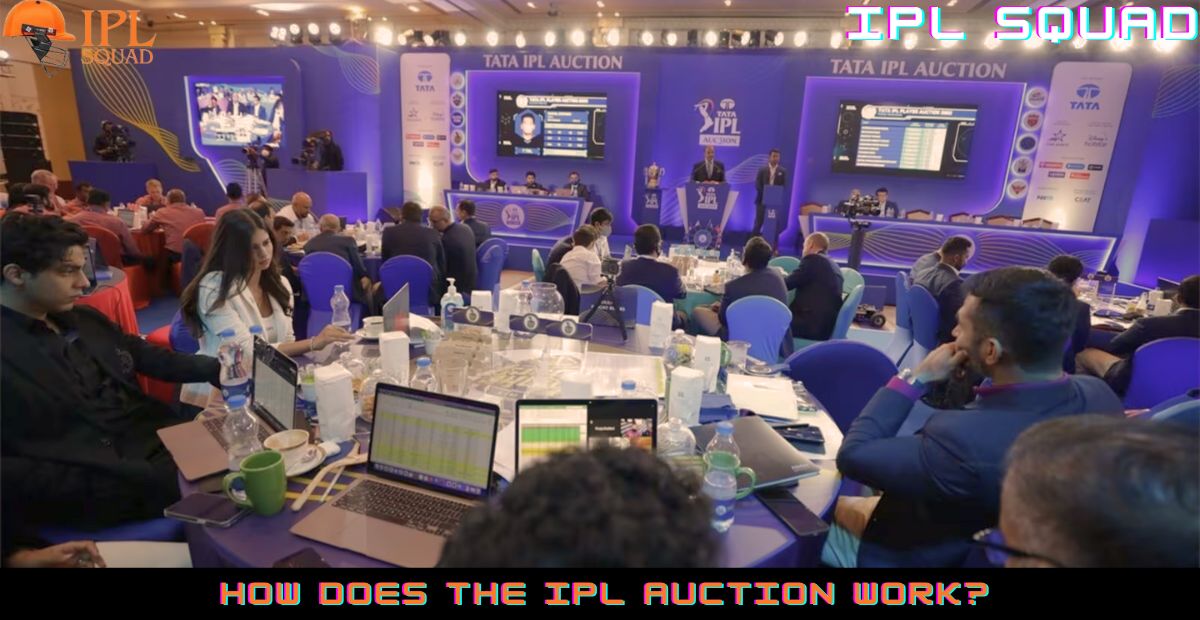The player auction is an unavoidable part of the IPL, which takes place every year before the season starts.
A chance for teams to exchange and go for the best for their respective squads. Every franchise can add stars to their teams in the combination of both home-based and overseas players, it is the event that kick-starts the build-up to the IPL each year.
For 2023, Sam Curran was the headline-maker, with the Englishman going for a record-breaking INR 18.50 crore when he was sold to the Punjab Kings.
We will see here how the auction works.
How does an IPL auction work?
For every IPL season, teams look for an exchange or replacement for the players who play for them. The final selection with the purchase of the player happens during the auctions.
The process is like this –
- Players are put ahead for auction.
- If the IPL teams are interested in a particular player they will bid for it.
- If the player has a decent track record and more teams want to have the player on their team, more teams bid for it.
- The team telling the highest bid gets the player
IPL Auction Rules
- Each team should possess a minimum of 18 players and a maximum of 25 players on their side.
- Every team must carry a total budget of Rs 90 crore and each team must incur at least Rs 67.5 crore in the auction.
- Each squad can buy at most eight overseas players in the squad.
The auction begins with a list of the top ten marquee players, which can receive the highest bidding due to their high value as a cricketer.
This year, the marquee players were R Ashwin, Shreyan Iyer, Mohammad Shami, and David Warner. The lowest base price is INR 20 lakh (USD 27000 approx.) and the highest is INR 2 crore (base price refers to the amount at the start of the bid).
Portfolio churn
IPL teams have the option of sustaining their players and not giving them to be a part of the auction bidding process.
In this year’s auction, for example, the eight existing franchises retained a total of 27 players. The highest amount of money paid for sustaining a player was spent by:
- Chennai Super Kings – Rs 16 lakh for Ravindra Jadeja,
- Mumbai Indians – Rs 16 lakh for Rohit Sharma, and
- Delhi Capitals – Rs 16 lakhs for Rishabh Pant
Similarly, when it relates to your portfolio, have enough time to understand why you want to retain some of your stocks or mutual funds. Studying the fundamentals, understanding the use case of these investments, and doing clear research are all important factors to consider.
The beginning of the Indian Premier League in 2008 saw the start of auctioning players, this changed the dynamic of the cricket landscape.
The IPL auction happens just ahead of the IPL season every year. It clears the inclusion of Indian and foreign players in the team for the tournament. The auction is Conducted by the Board of Control for Cricket in India (BCCI). The process was created to add further excitement to the short form of cricket game. It provides various franchises the opportunity to bid on the best IPL players in the world with its glory.
Settled over multiple days, the auction is where players are pooled together and sold to the highest bidder as per the IPL rules and regulations.
Teams are composed of a minimum of 18 players and a maximum of 25 in their squad, with no more than eight overseas players.
How much money each team can have?
Each franchise in the IPL gets a budget of INR 80 Crore to bring the best team that they see fit from all over the world (Capped and Uncapped Indian players as well as Overseas players).
Teams do not need to use the entirety of their INR 80 Crore, but rules stipulate that at least 75 percent (INR 60 Crore) must be allocated to players.
Franchises can spend 30-40 percent of their budget on the top five players.
Different categories of players in the IPL auctions
Capped Players
Indian players, who have represented the country’s senior team in any format at least once?
Uncapped players
They are Indian domestic players, they are in the first-class circuit but have never represented India.
Non-Indian/Foreign/Overseas players
These players can be capped, uncapped, or associated with cricket nations from nearby countries.
However, an IPL team can have a maximum of eight foreign players, with only four being allowed to field at one time.
No.of players are listed in the auction
There is no limit on the number of players listed at an IPL auction, with the number differing most years.
The amount of players listed is dependent on who signs up. The players must be approved by their respective countries/boards.
In 2018 there were 578 players up for grabs, according to Bleacher Report.
The following year the number declined to 346.
The player retention policies in the IPL
Each franchise can hold up to five players as a part of the pre-auction retention process in
combination with the ‘right-to-match’ (RTM) policy.
Teams can retain up to three Indian-capped players, and up to two overseas and uncapped Indian players.
From teams retaining some of their top players to two new teams grabbing time-tested cricketers, this year’s auction was action-packed and suspenseful.
In this blog, we will have a look at the major developments of IPL auctions. And also some investment lessons for the IPL auction to learn.
The seasonal trends to watch
In the IPL auction, we saw a remarkable amount of money being spent on fast bowlers. Also, it has been observed by many that on pitches with grass cover, fast bowlers get an advantage whereas, on slower-loose tracks, spinners get that edge.
A Team has formed now!
A typical IPL franchise table will have the owner of the team, the data analysts, cricket experts, and coaches. The owner of the team is the Rich person or company – giving the money with which the team can run its things further.
The coaches and cricket experts with their experience in the IPL arena, give their recommendations for player selection and exclusion. At each franchise table, These are usually the data analysts, who help in the selection of the players for the franchisees. These analysts have the data of all the players available for auction – how they have performed in the past seasons, average run rate, and average wickets per match. They inform whether to bid for a player or not and also give the price at which the bid could be made.
Also, do not hesitate to get help if you require knowledge and information for your investments. Instead of making investments in half-known facts, you can confirm the details through official sources.
Quality and quantity
This year, Ishan Kishan received the highest bid when Mumbai Indians spent Rs 15.25 crore to get him. On the other side, KL Rahul was picked up (before the auction as the new teams had the option to get some players in advance) by the new Lucknow Franchise for a high price of Rs 17 crore.
Valuation is a tough task- either in the IPL Auction or in the investment journey. Some teams spend a remarkable amount of their money purse on one or two investments in the form of players.
This is done after a lot of careful thinking. All investments in the players with a huge amount of money are out of a detailed study and planning to build up a successful team combination for the IPL tournament ahead. But as it happens, there is no guarantee that a player who got crores of rupees will play as per the expectation during the IPL journey.
Conclusion
Careful deliberation and research are the key. Some such decisions go wrong with time and investment goes in vain. So, It is a bit risky to have players with your choice as an owner to have a successful team of your dreams. The owner does as per the guidance and expert advice available before the auction. The selected players must perform for overall success. This is a must.
IPL Auction is the key to success in case of selection of players and investing in them. You never know which will go right or wrong. But clarifies during the season’s progress only.
________________________________________________________________________

